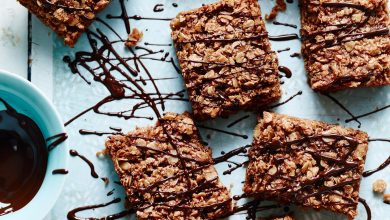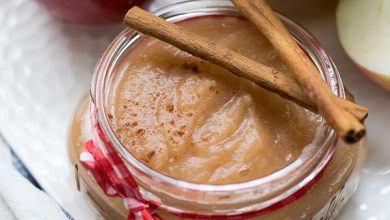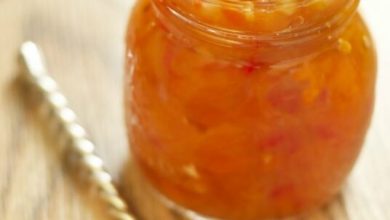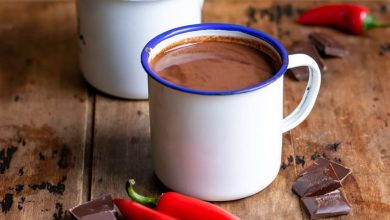🍜 Asian Noodles with Shrimp 🍤
Asian Noodles with Shrimp is a delightful and savory dish that combines the flavors and textures of succulent shrimp and tender noodles, typically seasoned with a medley of Asian-inspired ingredients. It’s a popular and versatile dish found in many Asian cuisines, offering a satisfying balance of protein, carbohydrates, and a burst of umami goodness.
History:
The history of Asian noodles dates back thousands of years, with origins in China. Noodles were an integral part of Chinese cuisine long before they spread to other parts of Asia. Shrimp, on the other hand, have a rich history in Asian cooking, as they are abundant in coastal regions and feature prominently in many coastal cuisines.
Components:
- Shrimp: Fresh, large shrimp are the star of the dish, contributing a sweet and delicate seafood flavor.
- Noodles: Typically, Asian noodles such as rice noodles, egg noodles, or even wheat noodles are used, depending on the regional variation.
- Vegetables: Ingredients like bell peppers, scallions, and bean sprouts are common additions.
- Sauce: A flavorful sauce made from soy sauce, oyster sauce, garlic, ginger, and sometimes a touch of sweetness from honey or sugar.
- Seasonings: Ingredients like chili flakes, sesame oil, and cilantro can be used for added flavor.
Steps to Prepare Asian Noodles with Shrimp:
-
Prepare the Shrimp:
- Devein and peel the shrimp, leaving the tails intact for an attractive presentation.
- Marinate them with a mixture of soy sauce, minced garlic, and ginger for about 15-20 minutes.
-
Cook the Noodles:
- Boil water and cook the noodles according to the package instructions. Drain and set aside.
-
Stir-fry the Shrimp:
- Heat a wok or large skillet over high heat.
- Add some oil and stir-fry the marinated shrimp until they turn pink and slightly crispy on the edges. Remove and set aside.
-
Sauté Vegetables:
- In the same wok or skillet, add more oil if needed and sauté your choice of vegetables until they’re tender-crisp.
-
Make the Sauce:
- Mix soy sauce, oyster sauce, and a pinch of sugar in a bowl. Pour the sauce over the sautéed vegetables.
-
Combine Everything:
- Add the cooked noodles and stir-fried shrimp back into the wok or skillet. Toss everything together, ensuring the sauce evenly coats all the ingredients.
-
Garnish and Serve:
- Garnish with fresh cilantro, sesame oil, and a sprinkle of red chili flakes for extra flavor and a pop of color.
Preparation Time:
On average, you can prepare Asian Noodles with Shrimp in about 30-40 minutes, making it a relatively quick and satisfying dish that’s perfect for a weeknight dinner or a special occasion.
Enjoy your Asian Noodles with Shrimp! 🍤🍜😋
Certainly! Here are the nutrition facts and some health information for Asian Noodles with Shrimp:
Nutrition Facts (Approximate values per serving):
-
Calories: Around 350-400 calories per serving, but this can vary based on portion size and ingredients used.
-
Protein: Shrimp is a good source of high-quality protein, providing around 15-20 grams per serving.
-
Carbohydrates: Noodles contribute to the carbohydrate content, offering about 40-50 grams per serving.
-
Fat: The dish typically contains a moderate amount of fat, roughly 10-15 grams per serving, primarily from the shrimp and any added oil.
-
Fiber: If you use whole wheat noodles or add extra vegetables, you can increase the fiber content to about 2-4 grams per serving.
-
Sodium: The soy sauce and oyster sauce can make the dish relatively high in sodium, so consider using low-sodium soy sauce if you’re watching your sodium intake.
-
Vitamins and Minerals: Asian Noodles with Shrimp can be a source of various vitamins and minerals, including vitamin C from vegetables, iron from shrimp, and B-vitamins from noodles.
Health Information:
-
Protein: Shrimp is a great source of lean protein, and protein is essential for muscle growth and repair.
-
Carbohydrates: Noodles provide a source of carbohydrates, which are a primary energy source for your body.
-
Fiber: If you add plenty of vegetables or use whole wheat noodles, you can increase the fiber content, which is important for digestive health.
-
Fat: While there’s some fat in the dish, it’s not excessive. The fat from shrimp can provide heart-healthy omega-3 fatty acids.
-
Sodium: Be mindful of the sodium content, especially if you have high blood pressure. Using low-sodium soy sauce or reducing the amount can help.
-
Vitamins and Minerals: This dish can provide essential vitamins and minerals, including vitamin C, iron, and various B-vitamins, contributing to overall health.
It’s a balanced dish with a good mix of nutrients, but as with any recipe, moderation and ingredient choices can help you tailor it to your dietary needs and preferences.








